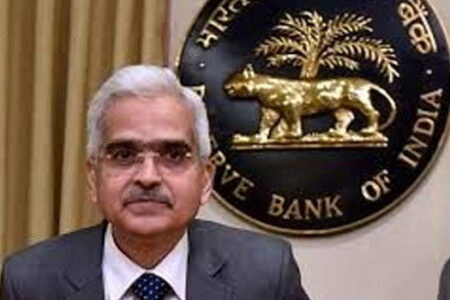Last week, the Assam Assembly passed the Assam Micro Finance Institutions (Regulation of Money Lending) Bill, 2020 to “protect and relieve the economically vulnerable groups and individuals from the undue hardship of usurious interest rates and coercive means of recovery” and “create an effective mechanism to regulate the micro … lending agencies … in the state…”
The provocation? Over-indebtedness of the tea garden workers in Dibrugarh, Tinsukia, Jorhat and Sibsagar districts in upper Assam and the alleged coercive loan recovery practices of some of the lenders.
Sometime in 2019, left wing peasant organisation Kisan Mukti Sangram Samiti (whose leader Akhil Gogoi was arrested in December 2019 for his role in the protests against the Citizenship Amendment Act and has been in jail since) and All Assam Students’ Union took the issue up and started agitation. Ahead of the assembly elections, the state government has usurped the issue from the local agitators. As poll promises, the Congress has already announced waiver of farm debts and microfinance loans for women.
What are the salient features of the Bill?
# The lenders must follow the Reserve Bank of India (RBI) norms on interest rates as well as collection of loan instalments and recovery of bad loans.
(Under the RBI norms, a microfinance institution [MFI] with at least Rs500 crore loan portfolio can keep up to 10 percentage points spread over its cost of borrowing to fix the loan rates; for smaller MFIs, the cap is 12 percentage points. Besides, the interest rate should not exceed 2.75 times the average of the so-called base rate, indicated by the RBI, for every quarter. As the current base rate is 7.96 per cent, no MFI can charge more than 21.89 per cent. Banks are free to fix interest rates for such loans.)
# A borrower should not be allowed to get loans from more than two lenders; the overall loan limit is capped at Rs1,25,000. For tea garden workers, the ceiling is lower. Those with multiple sources of income can borrow up to Rs50,000; for others, it is Rs30,000.
# During flood and other natural calamities, there must be at least a three-month moratorium on payment of interest by the borrowers.
# The loan price should factor in three components – interest, processing fees and insurance premium – and all loans must be unsecured.
# All lenders must follow a fair practice code to ensure disbursal of loans and collection of repayment in a transparent manner. For the protection of borrowers and settlement of disputes, the state wants to set up fast track courts in every district.
None can challenge these proposals and, in fact, most lenders have already been following them. The MFI industry had first formulated a code of conduct in 2006 when a crisis in Krishna district of Andhra Pradesh (AP) forced the state government to shut 50 branches of the two largest MFIs then, which were charging “usurious interest rates” and followed “forced loan recovery” practices. It was fine-tuned in 2011, after an AP law (in October 2010) led to defaults of 9.5 million micro loans by an estimated 6.5 million borrowers – the largest in any single location in the world.
International Finance Corp and Small Industrial Development Bank of India chipped in with their suggestions at that time and two RBI-recognised self-regulatory bodies (SROs) – MFIN and Sa-Dhan – implemented it. This has been revised in 2015 and 2019 to keep up with developments in the sector.
In addition to that, following the increasing share of universal banks, small finance banks (SFBs) and non-banking financial companies (NBFCs) in microfinance, the two SROs have created a “code for responsible lending” in 2019, laying down the dos and don’ts for all micro lenders.
Then, what’s the problem?
> The Assam Bill recommends local registration of all lenders, existing and new, for doing business in the state. If any borrower complains of wrong-doing, the authority can cancel the registration after issuing a notice to the lender. No MFI will be allowed to lend to one who has already borrowed from a bank, without the approval of the registration authority.
> Also, all loan repayment must be done at the office of the gram panchayat or a public place, prescribed by the registration authority.
No lender will like these two clauses. The first one will make the process bureaucratic (and subject to misuse by the authorities) and the second can make loan recovery a political issue. For all practical purposes, the Bill calls for dual regulation of the lenders – dictated by the RBI and the state.
Can Assam implement this? Going by the Bill, the norms will be applicable to MFIs, NBFCs and any entity registered under the provisions of the Companies Act 2013. The State Bank of India as well as the nationalised banks are not governed by the Companies Act and hence the Bill cannot cover them. Will these norms be applicable to the private banks, which are governed by the Companies Act beside the Banking Regulation Act and the RBI Act?
I don’t have the legal expertise to write the final word on this but it seems a complex case. Money lending is a state subject (Assam Money Lenders’ Act was passed in 1934) but the banks are governed by central acts. In case of a conflict between the two, the central regulation should prevail.
But it’s not that simple. For instance, local registration may not be outrageous as a state’s shops and establishments can cover a bank branch too. But when there is a conflict between the central and state laws in regard to the rules of business, the central law should prevail. By that logic, collection of loan instalments at panchayat offices can be challenged as such offices are not a place of business for private banks, even though they are covered by the Companies Act. The MFIs may not be able to escape it but cash collection will deal a blow to the digital financial inclusion drive.
Is the Assam Bill a repeat of the 2010 AP law, which almost killed the MFI industry? No. In 2010, the industry had the maximum concentration in the southern state. Assam’s share in micro lending (including banks) is just around 5 per cent (as opposed to AP’s 25 per cent in 2010, that too only MFIs’ business).
Thirty MFIs (of which eight are headquartered in Assam), around 10 NBFCs, six universal banks and four SFBs (one based in Assam) have exposure to 2.318 million borrowers in the state (4.21 per cent of national exposure). The outstanding micro loan book in September was Rs11,087 crore (5.18 per cent) and banks’ share in the pie is more than 50 per cent (Rs6,691 crore). Responsible lending will defuse the crisis, provided the state refrains from making it a political issue ahead of elections.



